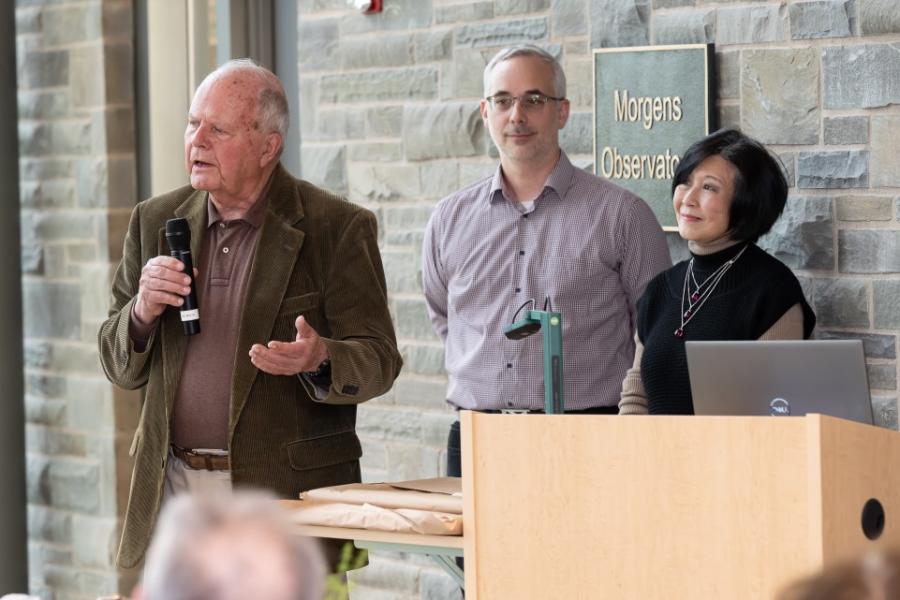
From Hornet pride to wasp wisdom
Abi Zuber, graduate student of the department of neurobiology and behavior at Cornell University, helps us explore why we should do research on bugs.
Read more Department Homepage
Department Homepage

The Department of Neurobiology and Behavior (NBB) was among the first to combine the study of animal behavior with its neural basis. Our faculty and students are dedicated to exploring a wide range of scientific topics, from single neurons and complex circuits to whole organisms and their societies. Central to our mission is the quest to unravel the profound mysteries of how nervous systems generate behavior, including the evolutionary pathways that have shaped brains and behavior over time. We believe these scientific frontiers are not just fascinating but also critical for understanding the intricacies of the brain, the least understood organ that underlies human experience. As a community we adhere to Cornell's Founding Principle of "... any person ... any study".

Abi Zuber, graduate student of the department of neurobiology and behavior at Cornell University, helps us explore why we should do research on bugs.
Read more.jpg)
The professorships are made possible because of gifts from alumni, parents and friends.
Read more

A new $1.5 million gift from philanthropist K. Lisa Yang ’74 has established the Charles Walcott Graduate Research Fellowship in Conservation Bioacoustics to fund graduate research at the Lab of Ornithology.
Read more


Robert A. Raguso, Professor in the neurobiology & behavior department has been selected to win the 2024-25 State University of New York (SUNY) Chancellor's Awards for Excellence.
Read more


Awardees were recognized for the significant impacts they have made to advance access, engagement and belonging through their service and leadership.
Read more

This month’s featured titles – most by A&S authors – include a work of nonfiction about honeybees, a kids’ picture book, and a novel set in rural Nova Scotia.
Read more
“This project sits at the cross-roads of neuroscience, ethology and artificial intelligence."
Read more
Luck can change life later on. “We wanted to know,” Matthew Zipple, a Postdoctoral Associate in the Sheehan Lab in the neurobiology and behavior department at Cornell University told NPR, “if we create a society where everyone starts out with the same genetics, has access to the same resources in th...
Read more